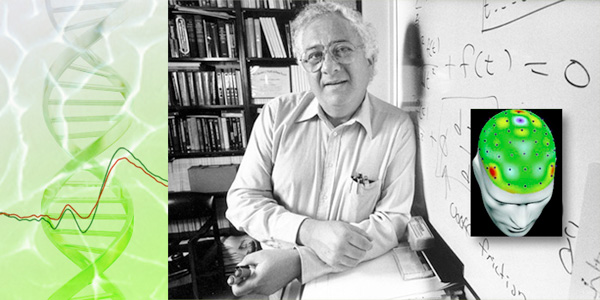Research in the Henri Begleiter Neurodynamics Laboratory

Dr. Henri Begleiter
In our laboratory we place a great deal of emphasis on the dynamic properties of oscillations in the human brain to increase our knowledge of information processing. These electroencephalographic (EEG) oscillations have a superb time resolution, and are especially effective for studying the temporal interactions of brain processes involved in neural networks.
Over the years the Henri Begleiter Neurodynamics Laboratory has been studying electrophysiological features that are involved in brain processing in response to various information processing tasks. We have identified electrophysiological features that are aberrant in alcoholics and individuals at risk for alcoholism that precede alcohol abuse and can be taken as markers of risk. These electrophysiological events consist of an amalgam of oscillations at various frequencies.
We are studying the simultaneous occurrence of specific oscillations such as delta (1-4 Hz), theta (4-8 Hz), alpha (8-13 Hz), beta (13-28 Hz), and gamma (above 28 Hz) in the human brain to understand information processing and human cognition. These studies are carried out in normal individuals, alcohol abusers and individuals at risk. These oscillations are known to carry information, which require the coupling of digital methods of signal analysis and of brain imaging. Finally, it should be noted that because these oscillations are highly heritable, we are attempting to identify genes responsible for the production of those fundamental brain oscillations.
Our research can be divided into three major parts:
- Using oscillations to understand cognitive functions and dysfunctions of the human brain in relation to alcoholism.
- Evaluating predisposition towards alcoholism using electrophysiological indices of information processing in high-risk individuals.
- Understanding the genetic underpinning of alcoholism.
Alcoholism and the promise of new research
Alcoholism has troubled men and women for thousands of years. For too long, people have thought of alcoholism as a sign of "personal weakness"; they blamed alcoholics for their illness and offered them no real hope or relief. Due to tremendous progress in scientific research, investigators can now study biological influences on alcoholism, some forms of which are most likely inborn and passed from generation to generation.
Facts about the genetics of alcoholism
Alcoholism runs in families! Dozens of studies confirm that alcoholism runs in families. For instance, if you are the child of an alcoholic parent, particularly the son of an alcoholic father, you are much more likely to develop problems with alcohol than are your peers. In fact, if you are a child of an alcoholic, you are four to nine times more likely to become an alcoholic than someone whose family history is completely free of alcoholism.
Alcoholism may run in families, but how do we know that its cause is partly inborn? How do we know that developing alcoholism in not simply the result of learning from one's family?
Studies of adopted children strongly indicate that some people have an inborn vulnerability which increases their chances of developing alcoholism.
Fact Check
Fact: Children who are born to parents with alcohol problems but are adopted and raised by non-alcoholics still run a very high risk of developing alcoholism.
Fact: Children who are born to non-alcoholic parents but are adopted and raised by individuals with alcohol problems are not at high risk.
Can anything be done for an illness which is influenced by genetics
There is much which can be done both by those at high risk for genetic illnesses, including alcoholics and their relatives, as well as by medical researchers!
- Individuals at high risk for alcoholism can join researchers in helping their own and future generations. Alcoholics and their relatives can work with researchers to identify the genetic basis of alcoholism.
- Individuals who know they and their relatives are at high risk for alcoholism may use this knowledge to protect themselves and their families. High risk individuals may be able to avoid drinking or can carefully monitor their intake of alcohol. It is very important to remember that not all relatives of alcoholics do develop problems with alcohol.
- Medical Researchers may begin to develop preventive strategies, more effective diagnostic tests, and medications once genes are discovered.